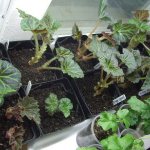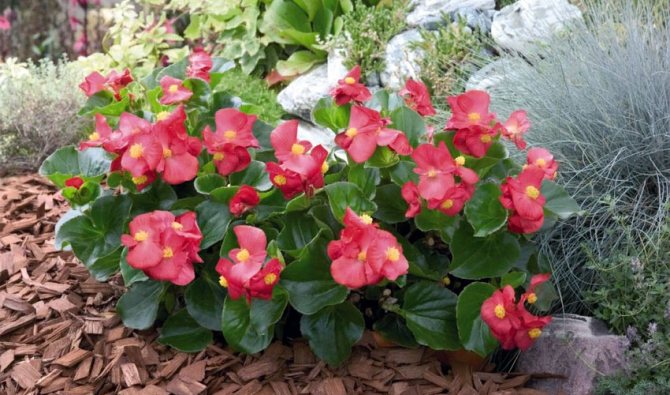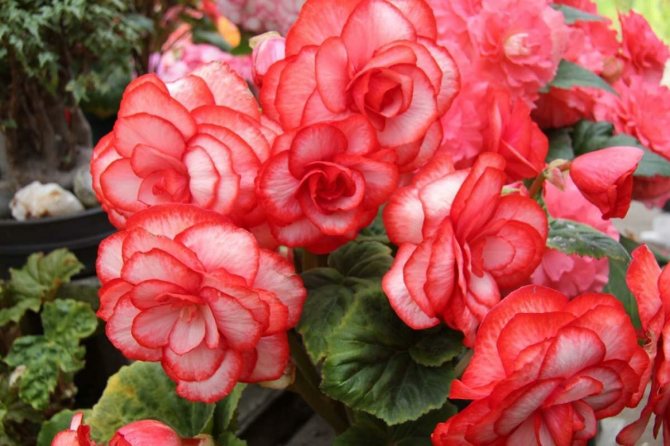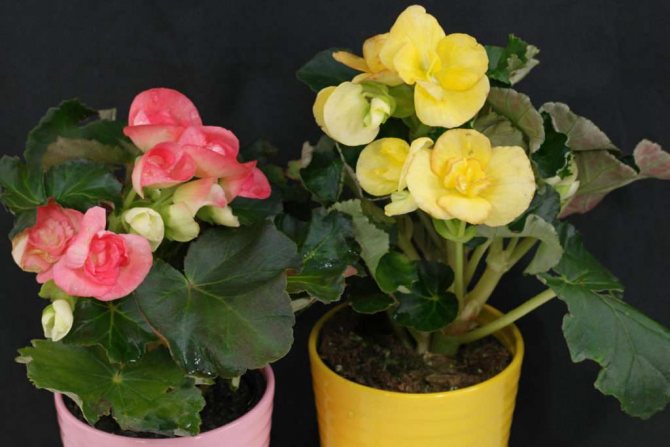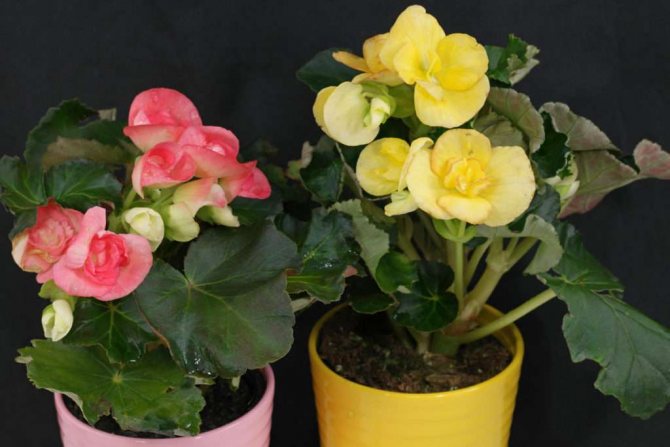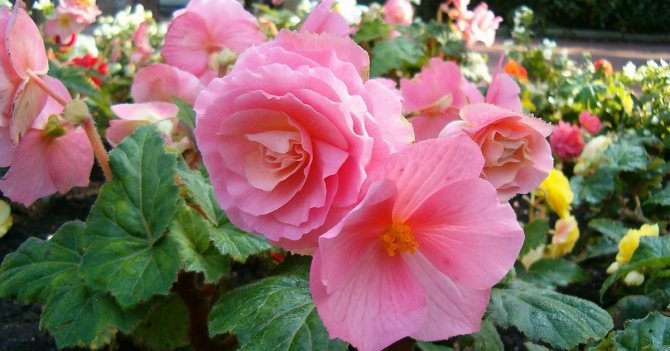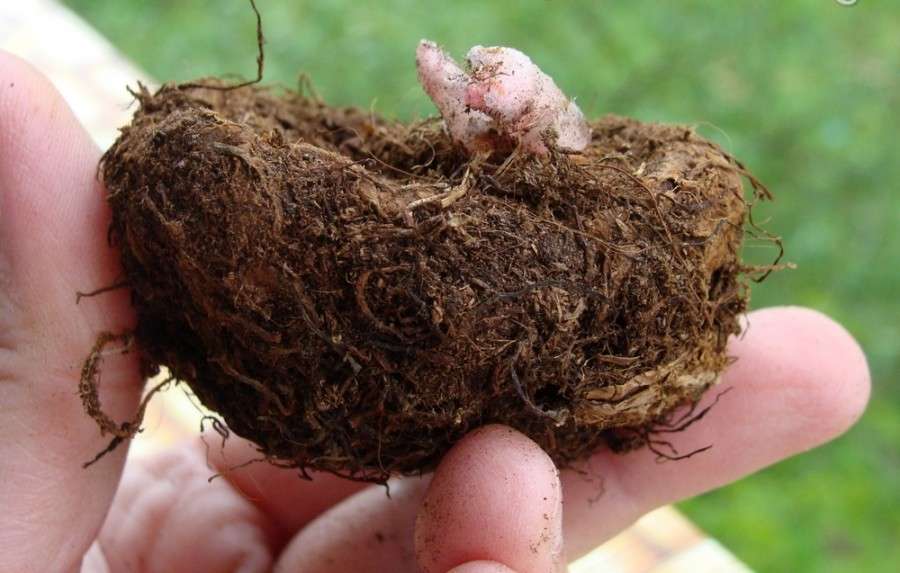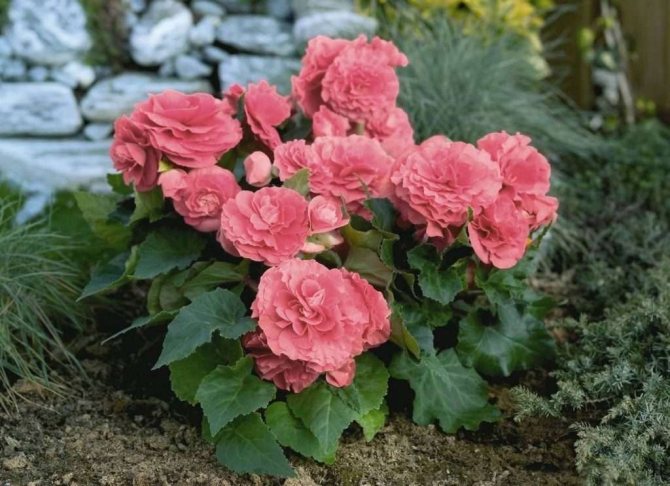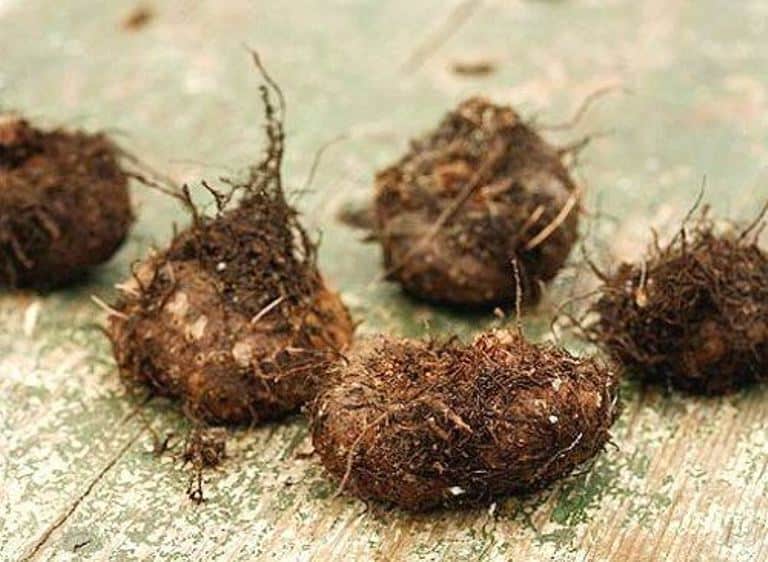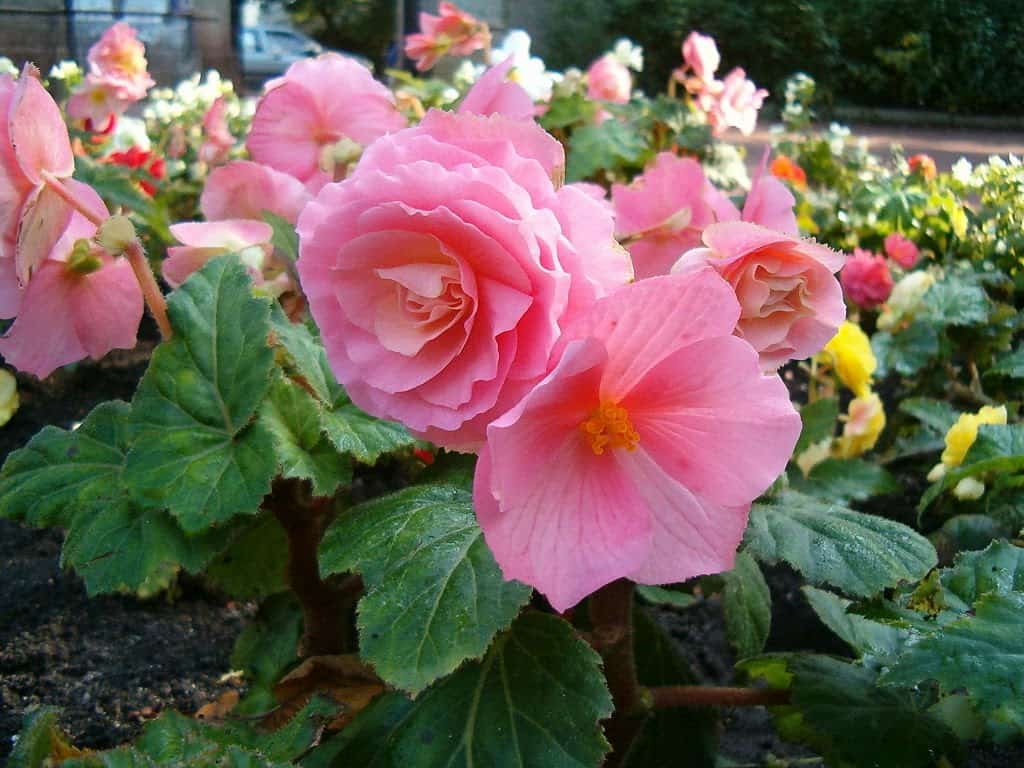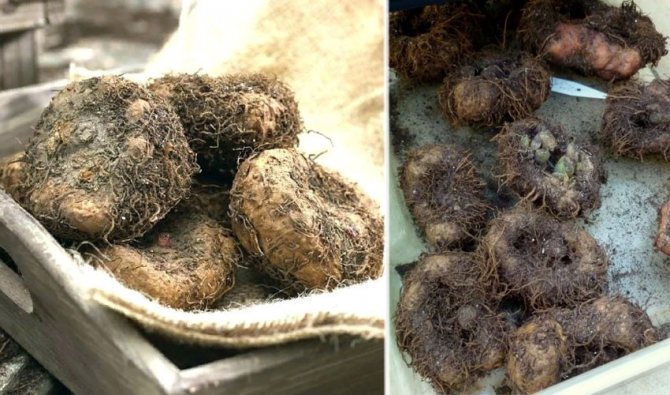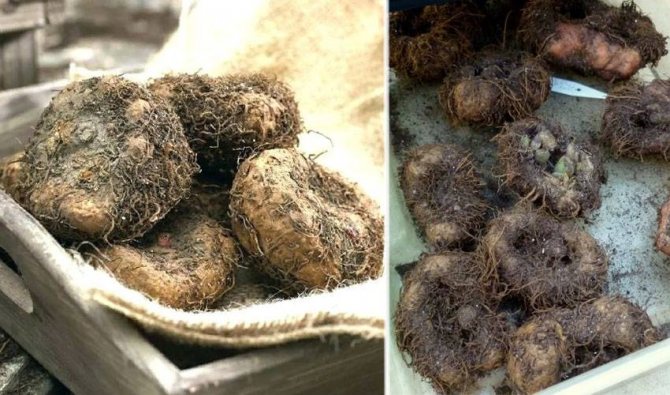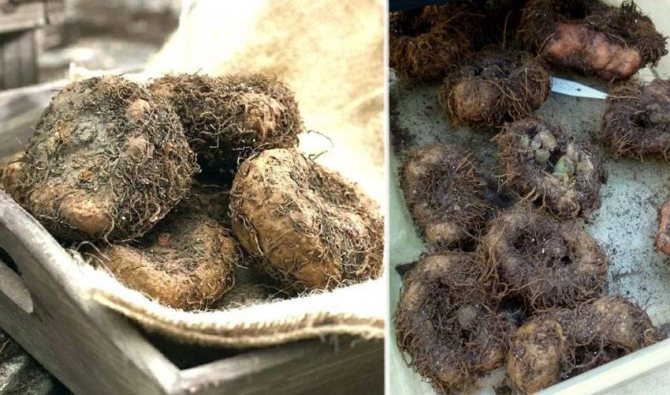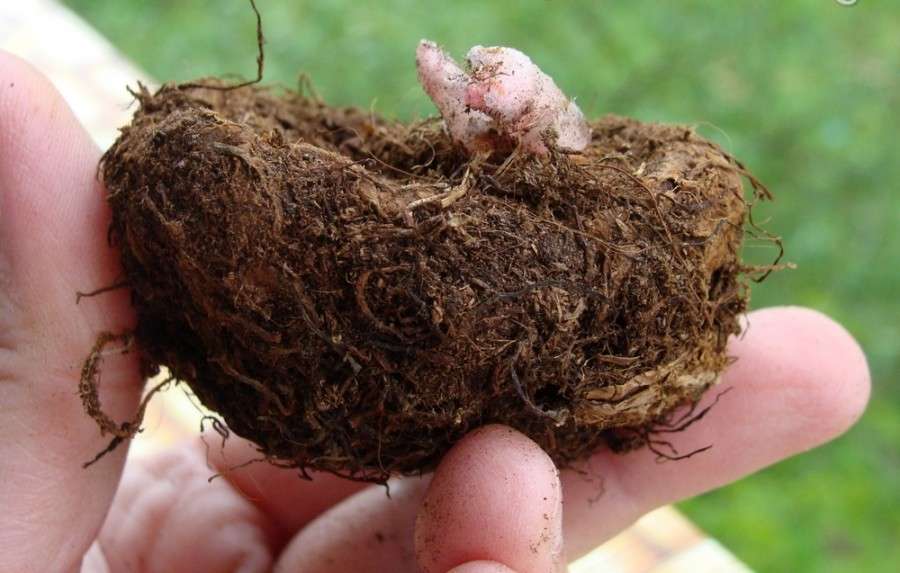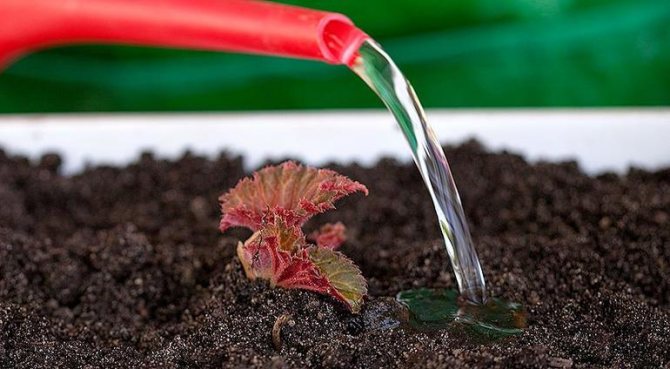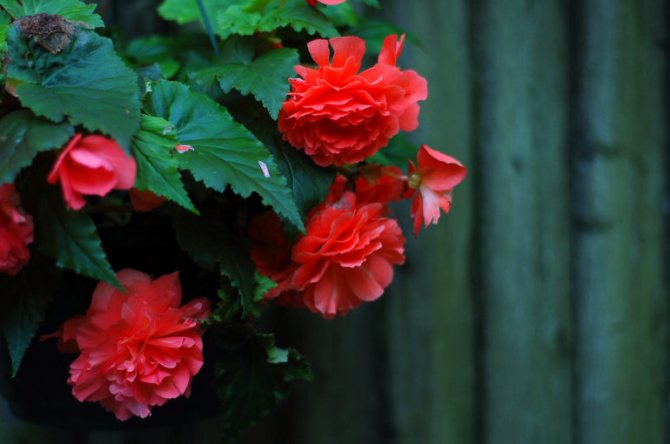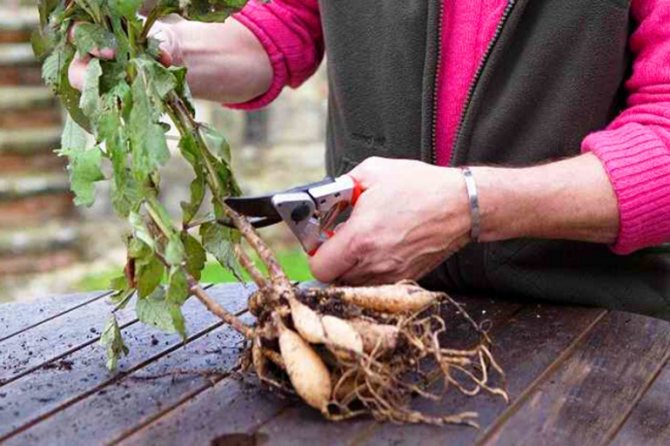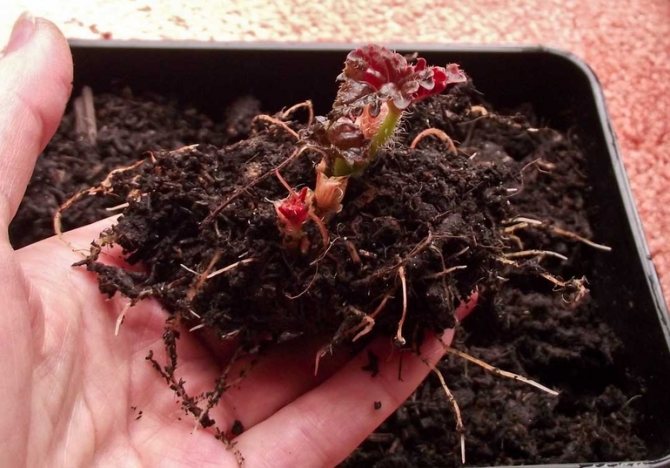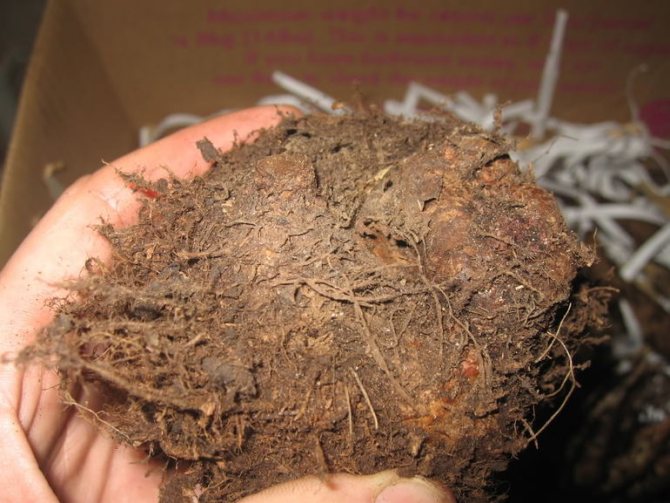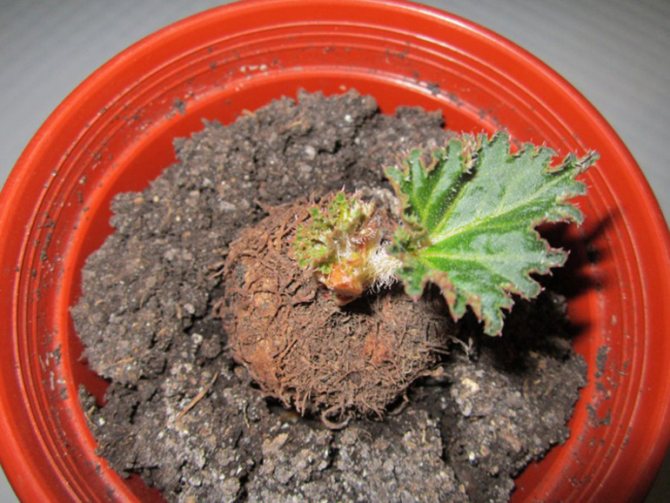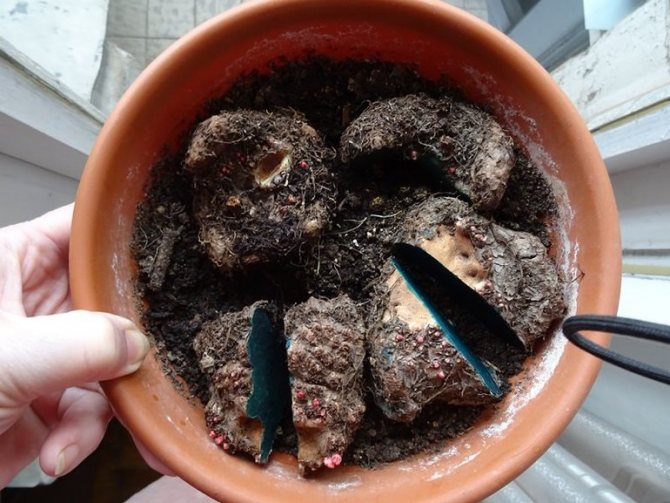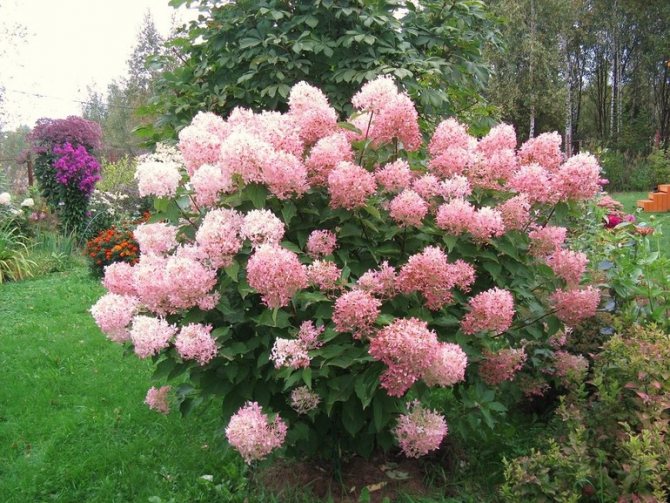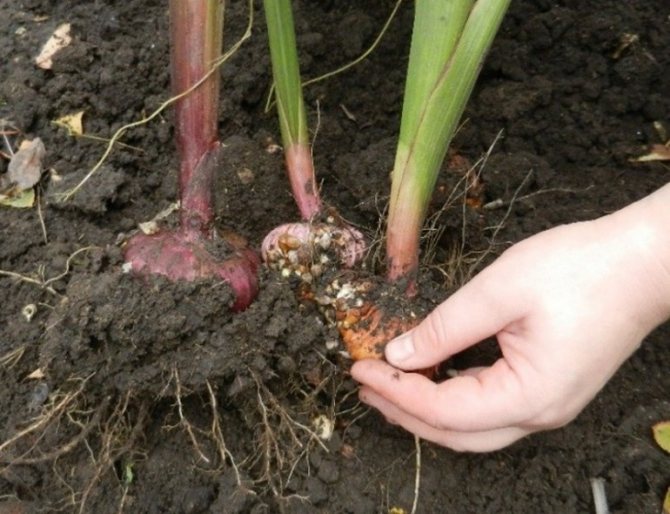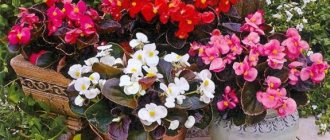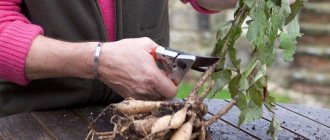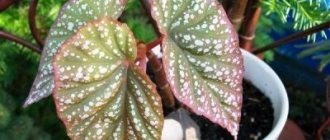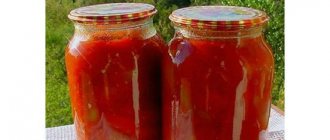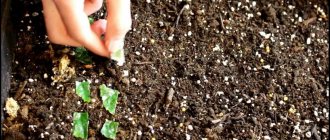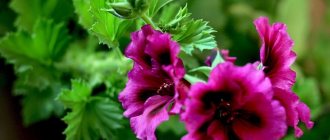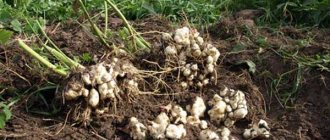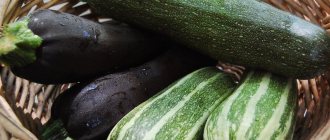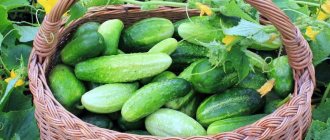It is important to remember that keeping seed-grown begonias in their first year of growth requires special care. Due to the small size of the tubers, the likelihood of their death is high. Therefore, in this case, forced sending for wintering should not be carried out.
There are species of this plant that do not require a dormant period. These include, for example, ever-flowering begonia. In good conditions, it can bloom all year round.
Features of wintering of First-Year Tuberous Begonias
In the first year of life, Begonia tubers are small and weak, therefore they need special care. If they are kept together with adult plants for the winter, there is a chance that the first years will die.
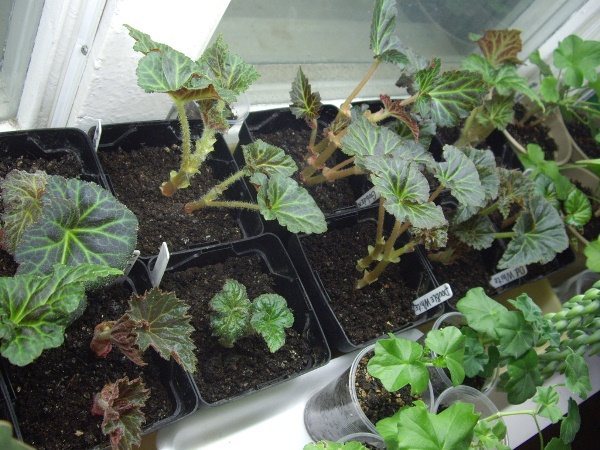
In winter, tuberous begonias enter a dormant period, which usually lasts from November to February.
How to properly dig up tuberous begonia
When the time comes (August-September), the begonia is carefully dug out, trying not to damage the root ball, then planted in a suitable pot. There must be drainage holes in the bottom of the pot, and a layer of drainage (expanded clay, pebbles) equal to 1/3 of the pot's capacity. Then the earth is poured, it can be like a garden one, but always with the addition of peat or leafy earth, humus, and sand, or ready-made from a package. Then the root ball is placed, the ground level should be at the same level that the begonia was planted before. If the begonia is in the growing season, that is, it grows and continues to bloom, then it is placed in the brightest and coolest place. Water when the substrate dries on top.
If the above-ground part of the begonia has died out, or has broken off, which happens during digging, then the begonia is placed in a cool place with a temperature of about +16 degrees. During this period, begonia is watered when the substrate dries out to half the capacity of the pot, watering should not be abundant.
By the end of November, if the potted tuberous begonia continues to grow, it is gradually transferred to a dormant period. To do this, they begin to reduce watering, arrange a longer period between waterings, or water less often and not abundantly. Gradually, begonia's shoots will begin to lose turgor and wither. Sometimes it happens that a decrease in watering does not affect the begonia, and after watering it tries to grow again, and in this case, the shoot is cut off, and the begonia is placed at rest in the right place.
Fresh articles about garden and vegetable garden
Why zucchini grow poorly
How to store begonia in winter. How to keep tuberous begonia in winter at home
From several methods of storing tubers, each grower can choose the most suitable one in his circumstances.
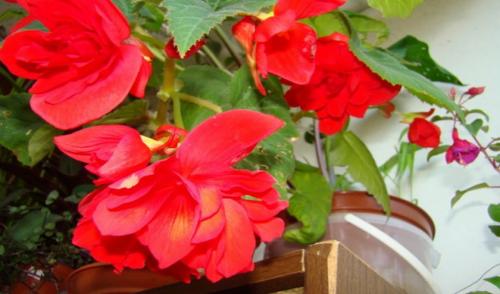

In this case, the following factors should be taken into account:
- flower age - 1 year or more;
- where it grows - in the open field or in a pot;
- where it will be stored - in a private house or in an apartment.
Let us consider in more detail the methods of wintering begonia tubers.
Resting care
Taking care of begonias in winter is not difficult.
Learn more about planting and caring for tuberous begonia.
Features of care depend on the way it is stored:
- Large tubers of adult flowers (older than a year), peeled and dried, are most often stored in boxes and boxes. They are carefully placed in these containers, carefully sprinkled with a prepared substrate, which may include peat, vermiculite and sand. You can fold the roots in several tiers. The main thing is that they are well covered with peat and do not come into contact with each other. A box completed in this way is placed in a dry, dark and cool place: a basement or an unheated room. The optimum storage temperature is + 10 ° C. To preserve plants in an apartment, you need to find the coldest place: a niche at the balcony door, a loggia, if it does not freeze, an empty space under the bathroom will do. Watering at this time is contraindicated. From time to time it is necessary to inspect the root crops to check their condition. If rot or mold is found, the diseased specimen should be removed so as not to infect the "neighbors".
- A small number of nodules, especially small ones, can keep well in the refrigerator. Before that, they are folded into a plastic bag with dry peat or sawdust and tied. Holes for ventilation must first be made in the bag. This package is placed in the refrigerator, in the vegetable box. Some people think that it is better to use paper, such as newspaper, instead of polyethylene in the refrigerator. Moreover, each potato is packed separately and is not sprinkled with anything. Then the paper rolls are placed on the bottom shelf of the refrigerator. This is how the tubers of young begonias, which are less than a year old, winter.
- Begonias that have grown from seeds do not shed their leaves in the first year and do not need winter rest. The florist's task is to protect them from cold and frost, so they are dug out of the flower bed along with the soil and transplanted into flower containers or pots. They need a bright but relatively cool place. The air temperature should be at least 10 ° С and not higher than 15 ° С. A window sill, under which there is no device for heating the room, is ideal. Watering should be reduced to once every 2 or 3 weeks. Watering is not abundant and not at the root, so that it does not rot.
- Potted home begonias require even less attention. At the end of autumn, the number of waterings is reduced until they are completely terminated. When the aerial part wilts, it should be cut off completely. The tuber is not dug out, but remains in the soil. The pot is placed under the bathroom or near the balcony. You can occasionally water a little when the soil dries up and lags behind the pot.
How to keep young tubers
It is recommended to store young begonia tubers in winter in pots filled with moist soil. Several nodules are placed in a pot and moisten the earth as it dries.
How to store begonia in winter:
- in the basement - at a temperature of 10 degrees and an air humidity of at least 80%. "Adult" specimens also overwinter here. They are placed in a box, at the bottom of which a layer of sand and peat is poured. The tubers should not touch each other. From above, the "masonry" is covered with a mixture for storage - vermiculite;
- in the refrigerator - the dried tubers are placed in a bag with peat and vermiculite, holes are made for air; or in a food container packed as for storage in the basement. The dryness of the backfill mixture is the main condition for storing tubers;
- in an apartment - they remove the pot in a cool, dark and humid room, or put it against the balcony door, or store it on a warmed balcony; do not move the pot from place to place and check the root system. How to keep ampelous begonia in winter? Ampel begonias are tuberous and stored as described above.
Dormant period and awakening of tubers
The period of rest or hibernation in ever-flowering begonia starts in November and lasts until early spring... With the help of this event, the plant hides from the cold. The main task of flower growers during this period is to preserve the tubers and protect them from drying out.
If the flower is sent for storage early, she may not have time to prepare for bed, since the supply of nutrients at this moment will be insufficient. therefore do not rush and remove the flower at the very beginning of autumn... The optimal time is late October - early November. The main thing is to be in time before the onset of freezing.
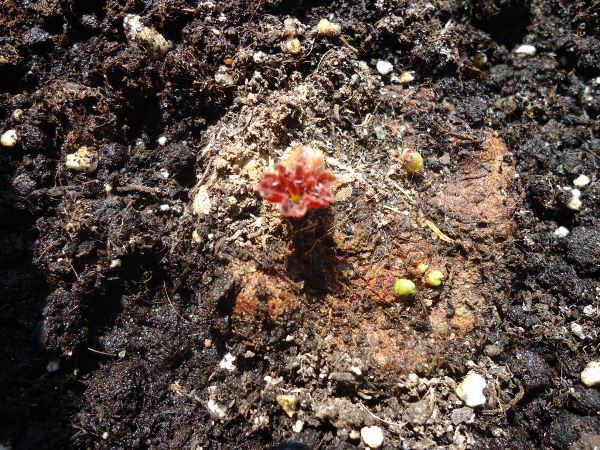

Tuberous begonia awakening after wintering
With the onset of heat, namely in March - April, the buds of the flower swell and the flower comes out of the state of sleep. At this time, it is necessary to carry out cuttings and plant in a peat mixture.
A couple of months before planting, the tubers must be removed from the container in which they were stored and planted in a container for germination.
The tubers should be planted so that their top looks up. It is usually concave or flat, with kidneys. For germination, you need warmth, not lower than 18 degrees, and daily watering... The first shoots will appear in a few weeks.
Tubers can be divided, the main thing is that on each part of them there are several buds. The place of the cut is processed with ash or charcoal. It is advisable to treat the places of cuts with charcoal.
Begonia is not tuberous. Question-answer: Was the purchased begonia tuberous?
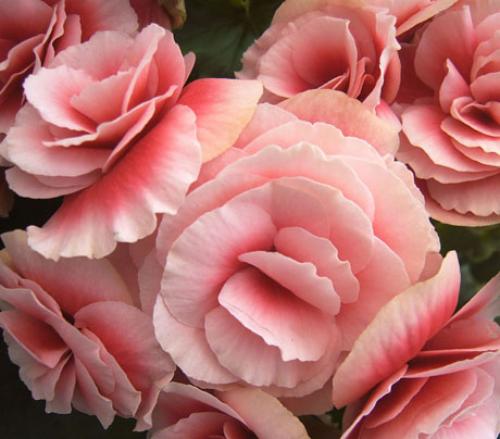

Question from Kamaeva:
Good day! I was presented with a blooming tuberous begonia, but I was warned that it is better to draw it out, since such begonias from the store usually die after flowering.
I do not have a photo of my begonias, but on the Internet I found a photo of exactly the same begonias as mine.
After flowering, I cut my begonia into cuttings and put them in the water. But since I remembered that begonia is tuberous, I also wanted to dig out the tuber and try to preserve it. And imagine - I didn't find any tuber! It may have rotted, of course, but even its remnants were definitely not there.
And the cuttings in the glass also disappeared without giving any roots.
I have a question: could such a luxuriantly rooted stalk of a tuberous begonia bloom without a tuber? However, I am confused in this case by the size of the "cutting".
And how to root a tuberous begonia stalk correctly?
Hello! First of all, you did not have a tuberous begonia, but an elatior begonia (= high begonia, = winter-flowering begonia (winter)). It doesn't have a tuber, so it's no surprise you didn't find one.
You can, of course, root cuttings from such a begonia even after it has faded, but you can immediately remove the flowers, cut the cuttings (and try to save the plant itself, it will give new shoots).
The apical stalk (3-4 leaves are enough, it is not scary if they later disappear) of elatior begonias should have a cut under the leaf-free bud. There should be no buds or flowers (remove immediately).
The cut can be dipped in aloe juice, then after a while in fungicide powder.
You can root it either in water or immediately in a soil mixture (or in peat tablets).
We put the cuttings in water (it is not necessary to pour a lot of it, it should only cover the lower kidney). Some gardeners add several pieces of charcoal to the water (to prevent the development of pathological microflora), a root formation stimulator (Kornevin, aloe juice, etc.). Some people prefer to root in dark dishes (brown glass bottles), but this is not important.
As the water evaporates, you will need to top up it.
When the roots appear (do not wait until they grow very much), we plant the cuttings in a loose substrate; for the first time, you can cover the top with a film (make a kind of greenhouse).
When rooting in the soil, cuttings are immediately placed in small cups or pots with a substrate.You can add the same charcoal (several pieces) to the soil in advance, spill it with a weak fungicide solution. The ground should cover the lower knot on the handle. You can cover the top with another glass or plastic bag. Don't forget to ventilate the greenhouse!
In any case, when rooting, a glass of water or a pot with a shank should stand in a warm, bright place (but not in direct sunlight). After signs of rooting appear (new shoots, new leaves), the plant must be rearranged to a cooler place.
As for the rooting of tuberous begonias by cuttings, the apical and stem cuttings can be rooted, but they should not be very thick. The stalk should have 2-3 leaves, while cutting off the lower one. The rest can be cut in half at once. The easiest way is to unscrew the excess shoots from the tuber and root (often there are many shoots from the tuber, the growers immediately get rid of the extra, weaker ones). Do not forget to sprinkle the wounds on the tuber with crushed charcoal or fungicide powder. It is difficult for many growers to root tuberous begonia in water, so it is better to immediately plant cuttings in soil mixture. Large diameter peat pellets can be used. The lower knot of the cutting should be completely hidden in the ground (the cutting is generally deepened by 2-3 cm). From above, you can make a greenhouse to maintain the required air humidity (cover with something transparent or place the seedling containers in a plastic bag).
After the roots appear, the plants are carefully transplanted.
General care rules
- Watering
Begonia is native to the tropics, so it prefers moist, but not soggy soil. The root system of the flower is delicate and abundant watering is detrimental to the roots.
During the spring-autumn period, begonias moisturize abundantly when the topsoil dries out. Complex fertilizers are applied once every 10 days when watering. Then they switch to a moderate regime.
Water for irrigation needs soft, no chlorine impurities, room temperature. You can dissolve 1 kg of peat in 10 liters of water - the water becomes soft and acidified.
Flowers in pots or vases are recommended to be watered by immersion.
- Temperature regime
"Grandma's Flowers" love warmth and diffused light. Leaf burns occur in direct sunlight. The temperature is desirable moderate from 18 to 25 degrees. Flower pots do not tolerate drafts and wither next to radiators.
- Humidity
Former Tropicans require 60-70% humidity. It is necessary to humidify the air through a fine sprinkler, make sure that drops of moisture do not fall on the leaves. It is useful to leave a vessel with water next to the pots - to create a humid microclimate around the flowers.
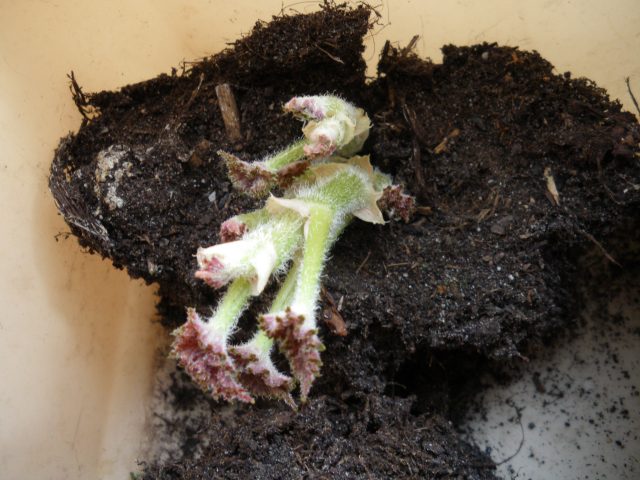

Subtleties of care
When growing begonias, tuberous care at home should be as close as possible to the conditions of the natural growing environment. In the open field and indoor culture, the basic requirements for the conditions and stages of agricultural technology are the same.
General recommendations
Sun, air, water in the right proportions plus the right soil are the essence of basic needs.
- Of the numerous begonias family, the tuber variety tolerates bright sunlight better than others. Moreover, the smaller the flowers, the more sun they need. Graceful ampelous hybrids and large-flowered begonias must be protected from bright light so that the leaves and delicate petals do not get burned. For them, flower beds in shaded corners of the garden are suitable, containers, pots with plants are best placed on the west and east sides.
- The same story with the thermal regime. Small-flowered heterotic species are more resistant to cold, and hybrids with large double inflorescences do not tolerate sharp drops or fluctuations in temperature. In general, tuberous species are thermophilic - the optimal range is 20–25⁰С. They are afraid not only of frost, but also of cold winds, temperatures close to 0.It is recommended to plant seedlings in open ground only with the onset of stable heat or provide shelter options.
- It is also impossible to overdo it with watering. A moisture-loving flower, when it gets on a tuber of water, especially cold, is prone to decay. Experienced growers recommend watering begonia bushes 1-2 times a week, in the early morning, with warm water, that is, so that the temperature of the soil, water and plants are as balanced as possible. In room conditions, watering through a pan or along the edge of the pot is desirable.
- It is easy to ensure optimal moisture and air exchange if you use light, loose, well-drained soil for planting. Continuous long (5–6 months) flowering takes up a lot of energy and requires systematic feeding.
Preparing tubers for storage
The result of storage and further growth depends on how correctly the planting material will be prepared for winter and how you will take care of this plant.
Firstly, Begonias that grow in the garden must be dug out before the first hard frosts.... At this time, the upper part of the plant is cut off, leaving hemp at least 1 centimeter in size.
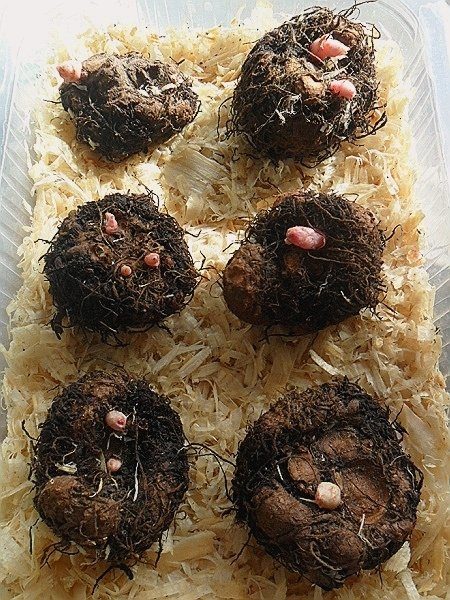

Dry the begonia tubers before storing.
Secondly, the tubers are harvested in a dry and cool place, where they should dry out. Only after they are completely dry can it be put away for storage.
It is best to dig the slops with a pitchfork and in no case should you shake the earth off them.
Begonia that grows at homeis stored differently. Preparation for hibernation begins in October. First, watering is reduced, after a month, it is completely stopped. When the top of the flower withers, it is cut off. If it does not die off, it is left in the same state.
Compliance with storage rules is the key to successful wintering and further growth in the future.
Winter storage methods for begonia tubers
To ensure safe wintering, 2 methods are suitable:
- Placement in flower pots, capable of extending flowering by 1 to 2 months.
- Storage in a cool place (in the cellar, near the balcony, etc.).
With the preference for the first method, where begonia is stored in potted soil-filled pots at room temperature, watering is gradually reduced. At the moment of complete wilting of the stems, they are cut off, and the tubers are removed from the soil and left for further conservation in the same pot.
The tubers extracted along with the clod of earth must be dried. To do this, you should use a place where there is good ventilation, and the humidity does not go beyond the specified limits. Storage in a dark place is considered another condition for a safe wintering. And when it comes to cutting the stems, the requirement for their height of 1-2 cm is met.
Video:
Successful wintering of an adult begonia, that is, a plant that has reached the age of 2 years, can be carried out in different rooms, which requires special rules.
Begonia tuberous care at home in winter. Winter begonia care at home
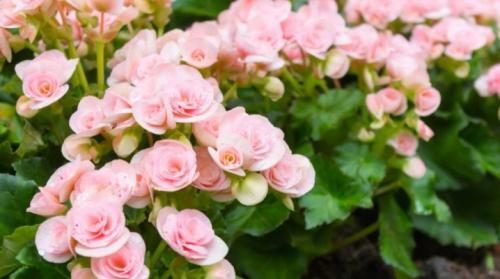

Begonia is a plant that has certain characteristics of life in winter. Taking proper care of the flower at this time will keep it in good condition. Let's take a closer look at how to properly care for this plant at home.
Features of winter care
Begonia is a plant that is constantly growing, with virtually no period of absolute dormancy. Favorable external conditions are essential for the flower to "feel" well in winter. An indicator of such well-being is the bright color of its leaves. If the color of the foliage changes, then this indicates that the plant is getting sick.
Begonia tolerates wintering quite well. A flower hibernates without any negative consequences only if it is properly looked after.So, in order for begonia to grow well, in the room where it is located, it is imperative to maintain certain microclimate indicators. The temperature regime in winter for begonias is important. In the cold season of the year, the plant does not require high temperatures. Experts recommend slightly changing the temperature regime. This will keep the plant in good condition.
During the winter period of the year, follow the regularity of watering. Begonia needs moisture. However, over-watering can cause the plant to get sick with fungal diseases.
Another important metric to watch out for is humidity. Due to the fact that heating devices work in the room in winter, this indicator of the microclimate changes. So, too dry air in the apartment can lead to the fact that begonia leaves lose their natural turgor. Plant care specialists recommend moving this ornamental plant away from a heater (such as a radiator) in winter. This will help reduce the risk of developing possible leaf damage.
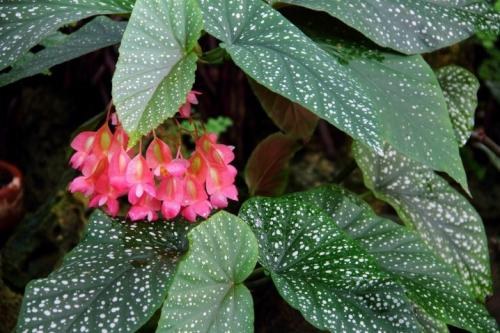

Fundamental rules
Taking care of indoor begonias in winter is quite simple. At the same time, experts recommend that you still prepare in advance for winter. So, the plant is recommended to be transplanted (if required) before the onset of cold weather. This will protect the plant's root system from damage, and will also not interfere with its further good growth.
Proper care of this plant depends on its variety. There are quite a few varieties of this flower. For example, tuberous begonias can be grown both on your own windowsill and in the open field. It is recommended to dig out garden tuberous plants from the soil at the end of November. In this case, it is imperative to cut off the remains of the shoots. It is recommended to do this in such a way that the remainder of the cut off shoot is no more than 1.5-2.5 cm.
After the begonia tubers are processed in this way, the remains of the soil substrate must be removed from them. After that, they should be placed in storage. It is recommended to store the dug tubers in a well-ventilated room. This is necessary so that rot does not appear on them. This thorough drying time should be 2 weeks. After that, the dried begonia tubers can be transferred to a box for further storage. In the room where they are located, the humidity should be 75-80%, and the temperature should be + 10-12 degrees Celsius.
Preparing begonias for winter
At the beginning of autumn, you need to cut off all the buds from the bushes so that the begonia has time to accumulate nutrients in its tubers before the onset of frost, and not release them for the growth and development of buds. As soon as it accumulates the required amount of nutrients, it immediately enters a resting phase, which will last until early spring.
After the buds have been cut, do not rush to dig up the begonia so that it has time to gain the mass of its tuber. She in this state will easily endure the autumn frosts. But do not delay its extraction before the first frost. If you pull it out earlier, then next year much less inflorescences will bloom on the bush.
And from the moment the buds were cut, you need to reduce watering so that the begonia goes into a resting phase. If the weather is rainy, cover the begonia with waterproof wrap.
But it happens that suddenly short-term frosts have come, and you did not have time to dig up the begonia, then you should not worry, in this case only the foliage freezes, and the tubers remain intact.
As soon as you notice the first signs of yellowing of the foliage, you can already start digging it up. It is better to do this with a pitchfork or a sharp shovel so as not to damage the roots. As soon as the tubers have been dug up along with the earthy clod, do not shake the soil from the roots.
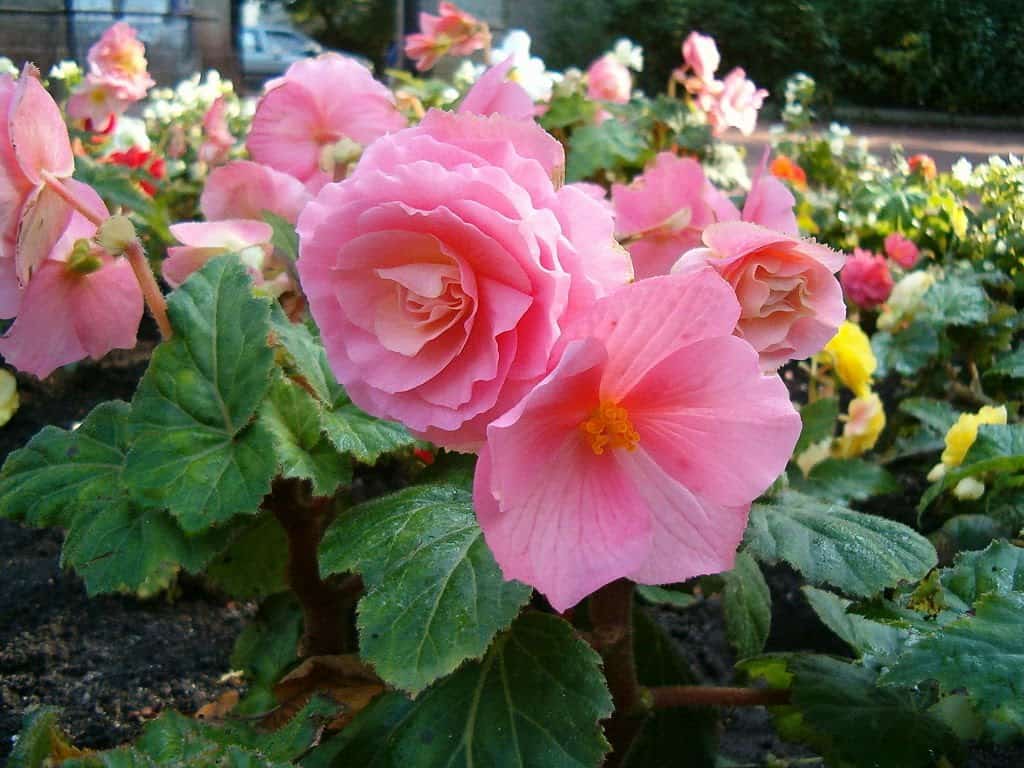

Then sort the tubers by size. Small in one container, large in another.It is undesirable to store them together, since small ones often dry out than large ones. The tubers are placed close to each other.
After that, the shoots of the begonias are cut with a pruner, leaving about 3 centimeters on top, and their roots are cleaned of the remnants of the earth. They are then taken to a dry and well-ventilated drying room.
The air temperature should not be lower than +14 o, but also not higher than +16 o degrees. Let the tubers sit in this room for about two to three weeks until their shoots are completely dry. It is better to dry them on cotton material.
Read also Microbiota decussata goldspot microbiota
After two to three weeks, they are placed in boxes with peat or dry sand for storage until spring.
But experienced gardeners recommend mixing peat or sand with vermiculite, as it has heat insulating properties and moisture absorption capacity.
Can protect tubers from harmful insects and mice, prevents root rot. It must be mixed with the substrate in equal proportions.
Further, the container with the tubers must be placed in a dark and humid room, where the air temperature does not exceed +10 o C. During the whole winter, you can sometimes water the soil so that the tubers do not dry out at all. This is only if the percentage of air humidity does not exceed 70%.
After the tubers have been removed for storage, you need to periodically check them all winter for fungal diseases. If you suddenly find tubers affected by the fungus, then in a severely neglected case they are removed, and those infected in a mild form can be cured by treatment with brilliant greens.
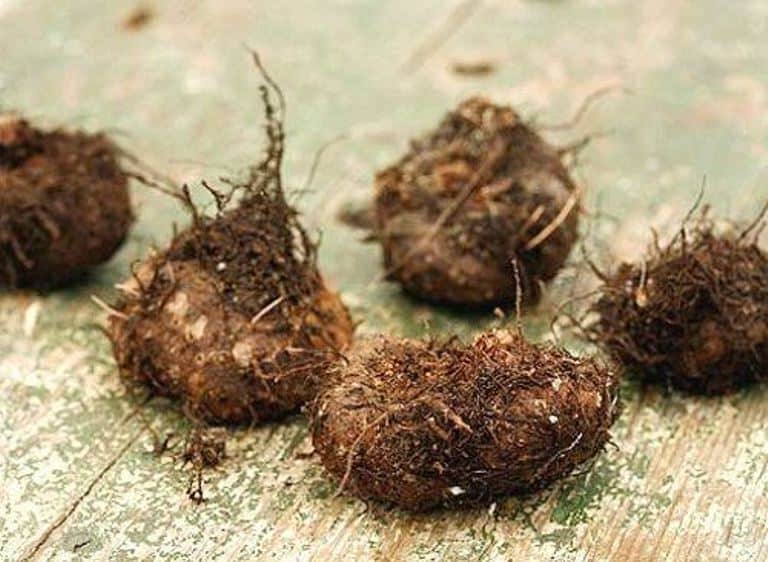

The rest of the room begonia
Indoor begonia, like a summer cottage, also needs rest in winter, so it gains strength to bloom in the next season. But you don't need to dig it out of the soil.
It is necessary to wait for the period when the stems begin to wither and the leaves fall off, then the watering of the plant is reduced at times. After that, the finally wilted stems must be cut off, and the pot must be removed to a dark and cool place.
During rest, it is undesirable to rearrange the pot with begonia throughout the room. Where they put it, let it stand there until it wakes up completely. You cannot loosen the ground. You only need to water the pot periodically, especially when the batteries are very hot and the air is dry. If you do not water it at all, then it will simply dry out and never come to life.
The most ideal places for its storage are an insulated balcony, basement, cellar. It is stored directly in the pot. If there is no darkened space in the apartment, then the begonia can be covered with newspapers or a cloth, otherwise the sunlight can wake up its shoots ahead of time and it will be very sluggish and bloom little, since it did not have time to gain strength.
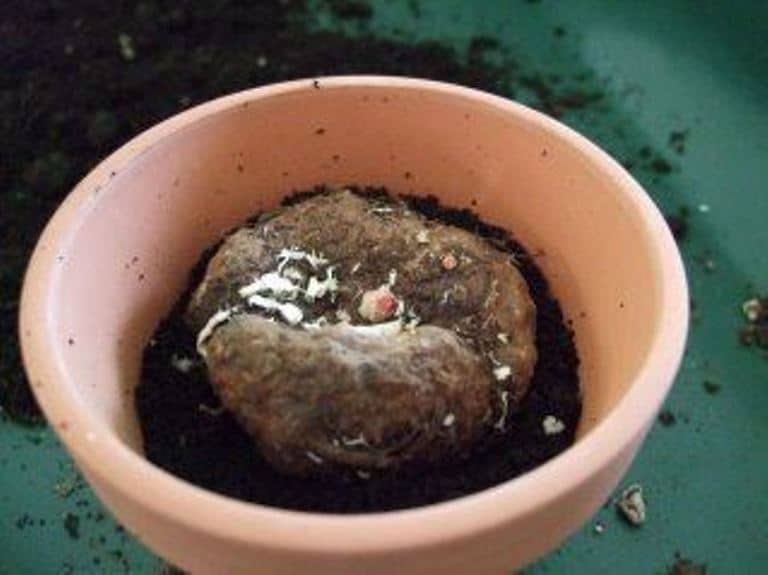

How to organize the correct wintering of begonias
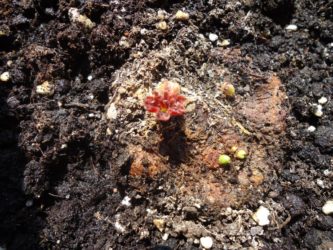

To preserve the beautiful begonia until the next season, it is necessary to properly organize her rest period. In most cases, with the arrival of summer and the onset of warm fine days, flower growers try to take their plants out into the open air. Even indoor begonias feel much better outdoors. They gain green mass more actively, form new shoots and buds.
the danger that awaits flowers with the onset of autumn is the first frost. Delicate fragile begonia leaves contain a lot of water, so they are sensitive to even the temperature drops to 0 degrees.
How to prepare begonias for storage?
In anticipation of the cold weather, the pot with the plant from the street must be transferred to the room. Now it's time to prepare him for rest, which means that watering needs to be reduced. In principle, they start to water the bush less often while they are in the fresh air, and when the flower “moves” into the house, the soil does not need to be moistened at all. After all, the tubers must be able to dry out before being stored.
Use in landscape design
Erect plants are planted in ground containers or flower beds.They look great against the background of a decorative "wall", in a white plastic flowerpot with a back wall, against a background of gray rubble or painted pebbles.
The beauty of blooming tuberous begonia will not leave anyone indifferent, it will improve the mood of every person. It is necessary to take care of the plant carefully and painstakingly, but in gratitude you will receive beautifully flowering bushes. If you wish, you can arrange a magnificent blooming garden on your windowsill.
Features of care after winter
A pot transplant is possible after the first leaves appear. There must be drainage at the bottom of the tank; expanded clay can be used. Plants sit so that the base of the stems is covered with soil, and sprinkle with ash and humus on top.
It is recommended to harden before planting on a flower bed. Only when there is no longer a threat of frost and a stable heat is established on the street, you can plant seedlings in open ground. The soil should first be loosened, mixed with sand, drainage can be added. Tubers, depending on the size, are planted at a suitable distance from each other. From above, the earth should be covered with ash and humus. Watering should be sufficient, but stagnant water should be avoided.
Tubers that have wintered in pots need to be transplanted, that is, change the old substrate in the pot to a new one. The updated flowers need to be placed on a light windowsill and watering resumed, and with the onset of warm weather, they can move to the balcony or outside.
Additional Tips
Experienced florist recommendations:
- In no case should you pick off the still green leaves from the plant. When the stem withers along with the leaves, it gives the necessary nutrients to the root crop. That, in turn, feeds, increases in volume and gains strength for the winter. But the tuber will not have such an opportunity if the "live" leaves are removed from the plant.
- If the air dries up in the room where the flower hibernates due to heating, you can use a spray bottle with water to moisturize the area around the flower.
- If shoots appear on root crops before the onset of spring, they should be broken off.
- The sprouts that hatch ahead of time are a sign that the temperature in the room is too high. This means that the box with planting material should be moved to a cooler room or transferred to the refrigerator.
- Sprouts that appear on nodules stored in the refrigerator indicate high humidity. Root crops need to be sorted out, dried and wrapped in dry paper.
Tuberous begonias can be called capricious: they are very demanding on the conditions of winter dormancy.
Important! Potted begonias must certainly be transplanted into a new soil, since pathogenic bacteria could settle in the old one.
But lush bloom in summer is a worthy reward for the time spent in winter.
When to dig up tuberous begonias for the winter
The procedure can be carried out after the onset of autumn frosts, in late October - early November, when the aboveground part of the begonias turns yellow and withers. But you should get ready for work already in September. To help the tubers accumulate as much nutrients as possible during the dormant period, remove buds and dried flowers from the plants. And if, for the sake of decorativeness, decide not to deprive the plants of flowers for as long as possible, get ready for the fact that the tubers will not have time to grow stronger for the winter, and next year the begonias will hardly please with lush flowering.
Do not rush to dig up the tubers if the plant is still green, otherwise the begonia may go to winter in a weakened state. Picking off green leaves to accelerate the transition to hibernation is also not recommended.
What to do with a tuberous plant in preparation for winter?
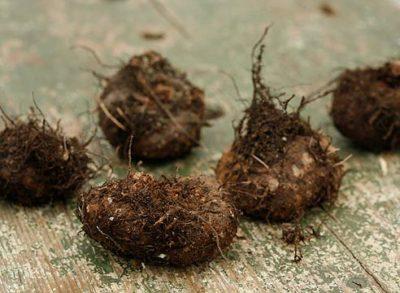

Digging begonia tubers, which will acquire yellow and fallen leaves from the ground with the first frost before the first severe cold weather.- Late digging is a way of moral preparation for wintering.
- When organizing it, they use a special garden tool so as not to damage significant parts of the plant.
- Tubers are harvested for the winter, cutting off the stems to 2-3 cm.
- Tubers clean without soil are removed into the box so that they dry out. This procedure is carried out in a dry and warm room. If there is high humidity in it, they will rot.
- After drying, and this takes an average of two weeks, the dried soil is removed and the begonia is moved to a "winter apartment".
When to dig up begonias and how to store them
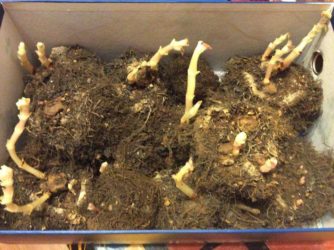

Ornamental deciduous, bushy and tuberous begonias, beautifully and profusely blooming, have long been an adornment of the interior of an apartment. With proper care, they can bloom in winter. Recently, the decorative culture has migrated to the garden area and copes with the function assigned to it - bright flowers and rich greenery transform the territory, making it bright and original. But tuberous begonia, as a heat-loving plant, needs to be dug out for the winter in order to preserve the tubers until the next season. Subject to certain rules, they keep well and bloom profusely throughout the season.
Features of tuberous begonia
Under the name "Tuberous begonia" hybrid varieties and varieties of garden perennial are combined, which can be grown as an indoor flower. Tuberous begonias are divided into types:
- large-flowered (7-20cm);
- mid-flowered (up to 7cm);
- small-flowered (up to 4cm);
- ampelous.
Tubers form on the stem below the root collar and above the place where the cotyledons are attached. The stem in the lower part of the shoot thickens slightly when the development of the first leaves begins, then, after a few years, the thickening (tuber) reaches 5-6 cm in diameter and accumulates a large amount of nutrients.
The tubers of young plants differ in shape - they are spherical, while in adult begonias they are flattened, angular, with powerful fibrous roots. Renal renewal is laid 3-5.
The stem is usually thickened, strong, branching, juicy, grows up to 25-30cm. The color and shape of the leaf plate is varied. Flowers (double and non-double) are similar in shape to roses, peonies, daffodils, carnations, camellias, can be single or grouped into inflorescences. Flowering, beginning in June, continues until mid-autumn.
Information! A distinctive feature is the formation of heterosexual flowers. Male flowers can be identified by their larger size, double petals and early flowering, female flowers are smaller and their petals (4-5) are smooth.
Why begonias need to be dug up
The natural habitat for tuberous begonias is humid tropical and subtropical regions. Heat-loving plants are characterized by a dormant period, when they rest from the active phase of growth and flowering, gaining strength for the next season. If you break this cycle, then begonias slow down growth, stop multiplying and lose their decorative effect.
Digging up the tubers and storing them correctly creates optimal dormancy conditions and does not disturb the natural rhythms of the plant.
Reference! The dormant period lasts from about the end of November to the end of February.
The second reason for digging up is that the structure of tubers and stems is such that at negative temperatures they freeze.
How to Prepare Tuberous Begonia for Winter
Before the moment of digging, a certain time must pass, during which the plant will prepare as much as possible for the procedure. Already in September, it is necessary to significantly reduce the volume of irrigation and completely stop the application of any fertilizers that activate life processes in the tuber and in the aboveground part.
Advice! To stop the flow of excess moisture in autumn wet weather, it is recommended to build protection over begonias, for example, to stretch a film. In bad weather, you can, without waiting for the tubers to ripen, dig up the bushes without cutting off the stems and transfer them in a coma of earth to a room where they ripen.After the bush withers, do the same with it in the same way as street begonias.
The buds and only the shoots that have just gone into growth should be removed, and the stems should not be touched, giving them the opportunity to fade naturally. Then, after the leaves have fallen off and the stems droop, cut the aerial part to a low hemp (1 cm).
In this form, the bushes stand for 1-2 weeks without watering or any other intervention.
Digging time
An important condition for a good wintering of tubers is their maturity - strong and ripe are well stored, and in spring they will quickly grow and bloom on time.
When to dig up begonias for the winter depends on the weather. If the temperatures are around + 9 ° -10 ° C, then the procedure can already be carried out. In case of unexpected frosts, the bushes can be easily protected using a covering material, paper. A slight decrease in temperature to minus indicators does not harm the underground part.
It is impossible to determine the dates by dates - they are different in each locality. Roughly these are the last days of October or early-mid November.
When such conditions occur, the tubers must be dug up and placed in an upright position in boxes, boxes for drying in a room with a moderate temperature and good ventilation. It is not necessary to clean the earth when digging - you just need to shake off the excess, and after drying, after drying, it will fall off by itself.
On a note! Some stems are cut after digging - it is so convenient to remove the bush from the ground.
With young begonias grown from seeds and green seedlings entering autumn, you should do differently, since they have not yet formed tubers - they need to be dug out with a lump of earth, placed in a bright and cool place for the winter and occasionally watered.
Indoor begonias, after wilting of the aerial part, are cut off and placed in a bright room with moderate temperatures until spring. The soil should be moistened 1-2 times a month.
Storage methods
Storage options depend on the number of tubers and their size. Larger and larger quantities are best kept in the basement, and smaller nodules in the refrigerator to avoid drying out.
Basement
After drying, the remaining soil must be removed from the tubers, trying not to damage the skin, sort by size and variety, put in cardboard (wooden) boxes or in containers with small cells. Pour moisture-absorbing material on top and between layers: sand, peat, sawdust, vermiculite, moss or a mixture of their equal parts. Be sure to regularly audit and remove rotting tubers or with signs of disease.
Important! Due to the high humidity, the cellar is not suitable for storing begonias.
Flat
In the conditions of an apartment, a place near the balcony door, an insulated balcony or a loggia is suitable. Small batches of tubers are stored, as in the basement, in boxes or boxes in a sand-peat mixture or in a mixture of sawdust, peat, moss.
Indoor begonias, after cutting the stems, are also stored in an apartment in a cool and bright place.
Refrigerator
Small batches of tubers or tubers that are too small can be conveniently stored in the refrigerator in bags with ventilation holes. The nodules are sprinkled with sawdust or each is wrapped in paper, folded in a bag and stored in a vegetable drawer.
Storage problems
In winter, tuber care is also needed: they are examined to remove diseased and dried ones, they maintain an optimal humidity regime in the room.
Possible problems:
- If the sand in the boxes is dry, it can be slightly moistened with a spray bottle, but not moistened too much, so as not to cause rotting of the tubers.
- If the sand is too wet and the room is warm, then the tubers may germinate ahead of time. The emerging sprouts should be broken off, and the tubers should be dried and transferred to a cooler place.
- When stored in the refrigerator, sprouts appear due to high humidity.The sprouts must be removed, the tubers dried, each wrapped in paper, folded into a bag with holes and placed back.
Possible problems and illnesses
In winter, begonia is quite vulnerable to various diseases. The risk of such diseases increases significantly if flower care is carried out incorrectly. One of the fairly common problems that are recorded in begonias in winter is severe dryness of the edges of the leaves. In this case, the damaged leaf can even curl into a tube. The result is that begonia practically withers in a pot, as a rule, a decrease in humidity in the room and an uncomfortable temperature for the plant. Experts in this situation, when begonia grows poorly, recommend moving the plant to another place. If the decorative flower stood on the windowsill at the same time, then it should be removed to a less illuminated place.
Improper watering can cause fatal damage to begonias. Plants die at the same time due to the fact that the root system is significantly damaged. If water has accumulated in the pan with the pot where the flower is located, then the moisture must be removed immediately. In this case, the frequency of watering should be reduced.
A change in the turgor of the leaves can be caused by the fact that the flower is quite close to the plate. Such a problem occurs quite often in winter also because, in addition to household appliances, heating ones also work. This, in turn, contributes to changes in humidity and temperature in the room, which leads to the fact that the begonia leaves begin to wilt. In this case, the flower looks drooping.
With the onset of unfavorable conditions, begonia can get sick. One of the diseases of this decorative flower is rot that develops on the stems or roots. The appearance of such manifestations on the plant is largely facilitated by the stagnation of moisture in the soil substrate. In such a situation, experts recommend that you definitely reduce the frequency of watering the plant, as well as measure the humidity in the room where it is located.
Heavy leaf fall is another problem that begonias lovers can face in winter. It can be quite difficult to "force" a flower to have luscious green leaves all year round in some situations. Experts note that if the leaves of this decorative flower began to fall off strongly, then in this case it is recommended to pay attention to where it is. Quite often, the appearance of this problem is facilitated by wind hypothermia of the leaves. This is often the result of finding begonias on a blown windowsill. If the leaves of the ornamental plant began to fall off strongly, it is recommended to remove it away from the window, and also to protect it from any drafts.
We offer you to familiarize yourself with: Tomato Icicle red: description and characteristics of the variety with photo
The appearance of yellow spots on the leaves of begonia and a change in its turgor is one of the possible diseases that can be detected in this plant. Cucumber mosaic viruses can lead to such adverse symptoms. It is rather difficult to cure a plant affected by these microbes at home. In this case, the diseased flower should be immediately moved to "quarantine", otherwise it can become a source of spread of infection to other plants.
Begonia, like many other indoor plants, can also be affected by powdery mildew. This disease is characterized by the fact that light spots with a specific bloom appear on the foliage of the flower. If such symptoms appear, then this ornamental plant must be treated with fungicidal agents.
For information on how to care for begonias in winter at home, see the video.
Can you help us meet spring?
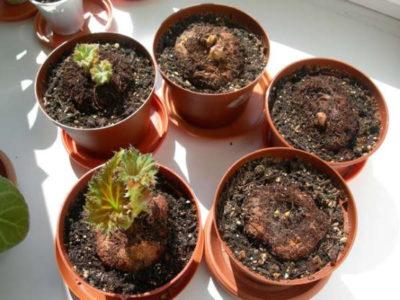

In March or early April, the home-grown plant begins to wake up, so during this period of time it can already be moved to a cool windowsill, where it will get used to bright lighting, while avoiding northern windowsills.
After a few days, you can start increasing the amount of water while watering. It must be at room temperature, settled. At this time, while the begonia gets used to the new conditions, its tuber will begin to germinate, and it will gradually begin to bloom. This is all you need to do to help the flower wake up if it has wintered in a pot. How to properly grow, water and care for begonia so that it blooms longer, we told here.
If in winter the tuber of the plant was stored in soil or sand, it must be planted for germination.: planting in containers with a damp substrate according to the 5x5 scheme, or immediately in individual pots (how to choose a pot and plant a begonia, read here). Boxes or pots where tubers germinate should be watered moderately, and also placed in a room with a temperature of 16-17 degrees.
It is possible to transplant sprouting tubers into open ground only when the stem grows and leaves appear on it, i.e. after about 2 - 3 weeks.
It is best to time the tubers to sprout by the time the spring frost is due to end.
During the dormant period, begonia does not require absolutely no attention at all., therefore, it is very easy to make it so that next year it will delight you with its bright and graceful colors. And it doesn't matter who is doing it: a beginner in this business or an experienced gardener.
Is it necessary to dig out during the cold season?
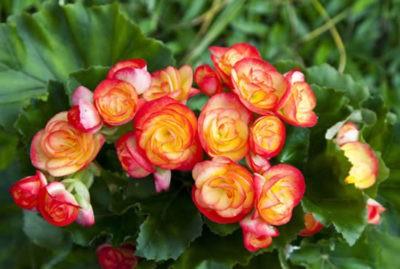

Begonia is a thermophilic plant... In the wild, it grows in countries where the climate is hot. Thanks to the selection work, the beauty is grown in the garden and on the windowsills by flower growers from Russia. In order for it to overwinter, do not cut the foliage in the first days of summer and do not dig up the tubers until severe frosts.
Autumn is an important stage in the life of a plant. It is at this time that it grows tubers, storing nutrients in them and forming buds for peduncles, which will bloom next year. Therefore, there is no need to rush in organizing hibernation, but there is no need to delay.
How to keep tuberous begonias until spring
The hardest part is keeping the begonias intact. The fact is that they tend to dry out and rot, so it is important to immediately ensure proper storage. When the tubers are dry, shake off the remaining soil from them, inspect again and place in a wooden box (not too tightly). To prevent infection with pathogenic bacteria and pests, wrap each tuber in a sheet of paper or newspaper. Then sprinkle with dry sawdust, peat, vermiculite or sand.
It is better to store begonias tubers in the basement. The ideal storage temperature is 4-10 ° C, humidity is at least 60%. It is advisable to store small tubers of young plants separately from adults, because they require more careful maintenance.
Some growers, before placing begonias tubers for storage, wash them in a weak solution of potassium permanganate or treat them with fungicidal preparations (Fundazol, etc.) to reduce the risk of fungal infection.
Planting a tuber
The best way to breed begonias at home is to plant them with tubers. Overwintered or purchased tubers begin to germinate at the end of February-March. They are cleaned of old roots. To enhance the protective functions, they are etched with fungicides (20–40 minutes). To accelerate root formation, the planting material is treated with Epin, a growth stimulator and the immune system of plants.
You can germinate tubers in small pots, and in May transfer them to balcony boxes or flowerpots. The second option is to immediately plant it in a permanent place.In this case, the container needs a shallow and wide one, the soil is desirable targeted (for begonias), well loosened and drained. The planting tuber is placed with the convex part (bottom) down, covered with earth "on the shoulders" so that the buds remain on the surface.
The planted tuber is immediately exposed to light, after the formation of two true leaves, it is sprinkled with a substrate. From this point on, begonias can be fed.
Plants grown at home are more hardened, take root faster in the open field, and tolerate changing conditions better.
Video about pruning and grafting tuberous begonia
How to store first year begonia tubers?
Begonia tubers grown from seeds this year do not sleep during the winter. In the first year of its life, the plant tries to increase the mass of the tuber, and therefore retains the leaves. If the seedlings developed in open ground, then before the onset of the first night frosts, the plants must be transplanted into pots and swept into the house.
How to store first-year tubers in winter? They do not shed their leaves and are not laid to rest. They should wait out the winter in a cool and bright place, where the temperature does not drop below + 15 degrees. How experienced florists do:
- They stop feeding since September.
- The buds that the plant lays in September-October must be cut off.
- It is necessary to water the first-year begonia tuber as the top layer of the soil dries up. Watering is carried out along the contour of the pot. Water should not get on the tuber. The optimal watering regime is once a week. It is possible less often if the temperature of the content is within +15 degrees.
- Lighting is required. Otherwise, the stems of the begonia will simply stretch out.
- You can store begonias in winter on the east side of the house. But heating devices can in this case dry the air and raise the ambient temperature, and therefore a container with water can be placed on the windowsill.
- You cannot feed the flower. Although it retained the ground part, it practically does not consume nutrients from the soil, and their excess can lead to root rot.
In spring, extended cuttings can be cut and rooted, but only after the tuber has given new stems.
Description and types of tuberous begonia
Tuberous begonia fascinates with an abundance of bright inflorescences - a complex hybrid, first obtained in the middle of the 19th century. Since then, hundreds of varieties and cultivators have appeared, both heterotic, intended for cultivation in the open field, and tuberous, for indoor cultivation.
Begonia of this species is easily recognizable by its fragile, juicy stems with a translucent texture, light green or olive shade. The leaves, like those of its other relatives, are asymmetrical, often glossy. The bush, depending on the variety, can be compact (up to 20 cm) and quite high (70–80 cm). Flowers differ in size - from 5 to 20 cm in diameter and shape - simple, fringed, double. The underground rhizome (rhizome) thickens at the base and forms a tuber. By analogy with bulbous plants, new roots grow from the bottom of the tuber every year, and the old ones die off. Therefore, tuberous begonia needs annual rest (wintering), which falls on the cold period and lasts from 2 to 3.5 months.
There are several varieties of tuberous begonia.
- The multiflora group is characterized by neat, well-branched bushes with small (5–8 cm) double or corrugated flowers.
- Begonias grandiflora are distinguished by large (up to 15 cm in diameter), beautiful flowers, similar to camellia.
- The abundantly flowering floribunda is characterized by double inflorescences up to 9 cm in diameter.
- A distinctive feature of the ampelous group is drooping, rapidly growing shoots with an abundance of graceful, corrugated flowers of a rich color - apricot, salmon, pale pink.
Note! Begonia is a monoecious plant.On one bush bloom male - bright, double and female - inconspicuous, simple flowers. If you do not plan to propagate the begonias by seeds, the female flowers should be removed so that the plant does not expend the effort to ripen them.

